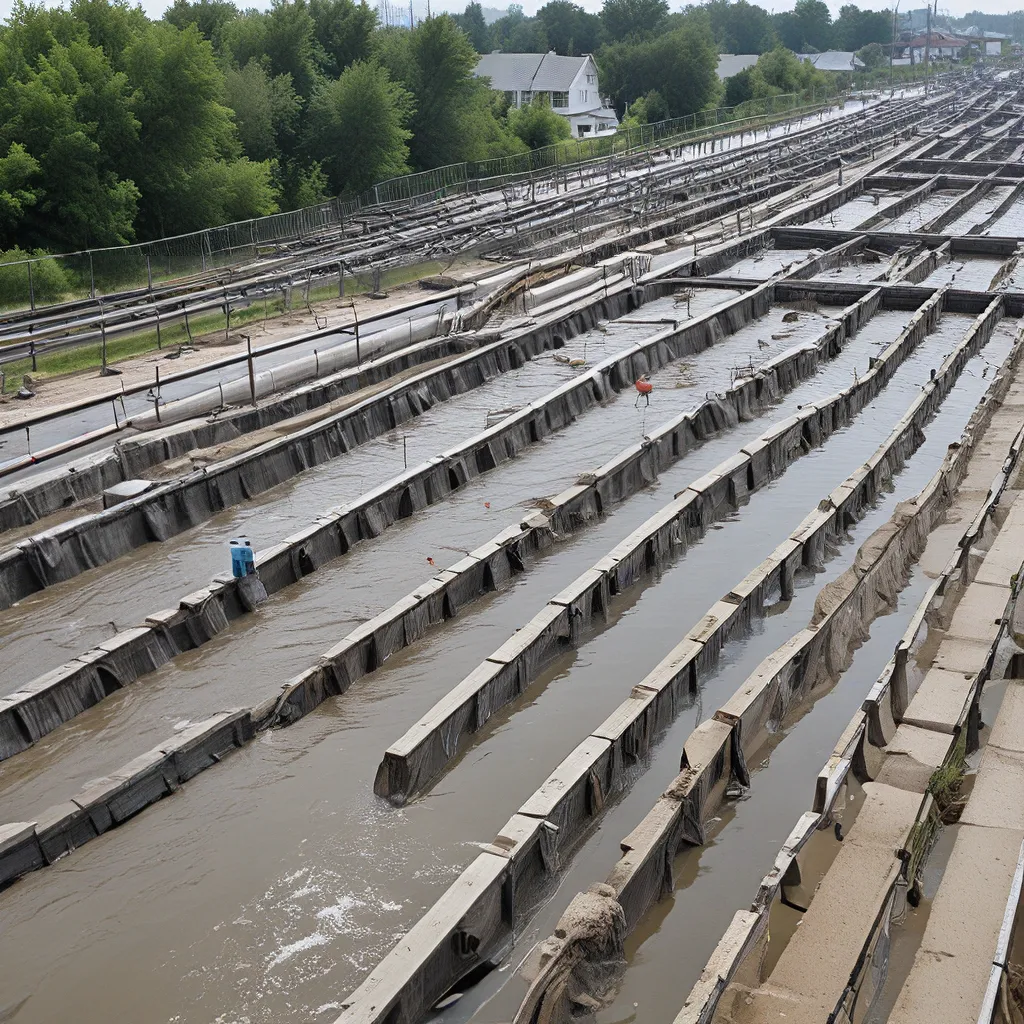
As the world grapples with the realities of climate change, it’s become increasingly clear that our wastewater treatment infrastructure needs to be prepared for the unpredictable and often extreme weather events that are becoming more common. Whether it’s prolonged heavy rainfall, devastating floods, or extended droughts, the ability of our wastewater systems to withstand these challenges is crucial for protecting public health, the environment, and our communities.
Lessons from the Past: The Reedsburg Story
In 2008, the city of Reedsburg, Wisconsin, learned this lesson the hard way. After completing an $11 million upgrade to their wastewater treatment plant, including the construction of a new berm to protect against a 100-year flood, the plant was still no match for the torrential rains that drenched the region. Over the course of just two weeks, a whopping 14 inches of rain fell, causing the Baraboo River to rise two feet higher than the new berm. The result? The brand-new treatment plant was completely inundated and left inoperable for weeks, discharging raw sewage directly into the river.
As Reedsburg Public Works Director Steve Zibell ruefully reflected, “After spending $850,000 in repairs plus $400,000 to raise the berm an additional three feet, I feel that Reedsburg is ready for the next big storm event.” But the question remains: how many other communities across the country are just as vulnerable to these extreme weather threats?
Mapping Vulnerabilities and Building Resilience
The historical record of rainfall and the projections of future precipitation patterns painted a clear picture for Wisconsin and many other regions – heavier and more frequent extreme storms are on the horizon. Yet, the traditional approach of adapting to rainfall impacts only after a major storm has occurred leaves many communities dangerously exposed.
Recognizing this, scientists at the University of Wisconsin-Madison, with funding from NOAA’s Sectoral Applications Research Program, set out to develop a tool that would allow communities to assess their vulnerability to extreme rainfall without having to experience it firsthand. By taking the rainfall data from the 2008 storm that overwhelmed Reedsburg and transposing it onto the Yahara River watershed that runs through the state capital of Madison, the researchers were able to model the runoff, streamflows, and lake levels as if the storm had occurred in a different location.
The results were eye-opening. The simulated storm revealed unforeseen vulnerabilities and adaptation opportunities for the communities within the Yahara watershed. As David S. Liebl, one of the project’s developers, explained, “Using the storm transposition tools requires specific technical skills, but ultimately the developers envision the tool as a NOAA-USGS product available online with either a catalog of design storms or the ability to choose specific storm events from the NEXRAD archives.”
Federal Assistance for Wastewater Resilience
While communities are working to better understand and prepare for the threats posed by extreme weather, the federal government has also recognized the need to support these efforts. The U.S. Government Accountability Office (GAO) has examined the technical and financial assistance available to utilities that produce drinking water and treat wastewater, with a particular focus on enhancing their resilience to climate change-related impacts.
The GAO’s findings reveal a mixed picture. On the one hand, the Environmental Protection Agency (EPA) does provide technical assistance to utilities, helping them to improve the resilience of their infrastructure. However, as GAO officials noted, the EPA’s program is relatively small and cannot assist utilities nationwide. Additionally, the GAO recommended that the EPA take a more proactive role in organizing a network of technical assistance providers, including federal and state agencies, universities, and industry groups, to help utilities incorporate climate resilience into their infrastructure projects on an ongoing basis.
On the financial assistance front, the GAO found that while federal agencies have taken some actions to promote climate resilience when providing funding for water infrastructure projects, the consideration of climate resilience is not consistently included as a requirement. As the GAO report stated, “Most selected experts suggested that federal agencies should require that climate information be considered in the planning of water infrastructure projects as a condition of providing financial assistance.” Such a requirement, the experts argued, could be an effective and feasible way to help enhance utilities’ climate resilience, ensuring that they plan for the impacts of extreme weather events.
Preparing for the Unpredictable
As the frequency and intensity of extreme weather events continue to escalate, it’s clear that wastewater treatment facilities must be at the forefront of our efforts to build resilience. By learning from past experiences, leveraging cutting-edge tools and technologies, and advocating for increased federal support, we can help ensure that our communities are prepared to weather the storms to come.
At Alpha Wastewater, we understand the critical importance of this challenge. That’s why we’re committed to working with municipalities, utilities, and government agencies to develop and implement innovative solutions that can withstand the unpredictable forces of nature. From upgrading aging infrastructure to implementing advanced monitoring and control systems, we’re dedicated to helping our clients build the resilience they need to protect public health, the environment, and their communities.
As we continue to grapple with the realities of climate change, one thing is certain: the future of our wastewater treatment systems will be defined by their ability to adapt and thrive in the face of extreme weather. By staying informed, collaborating with experts, and investing in the right solutions, we can ensure that our critical infrastructure is ready to weather any storm that comes our way.